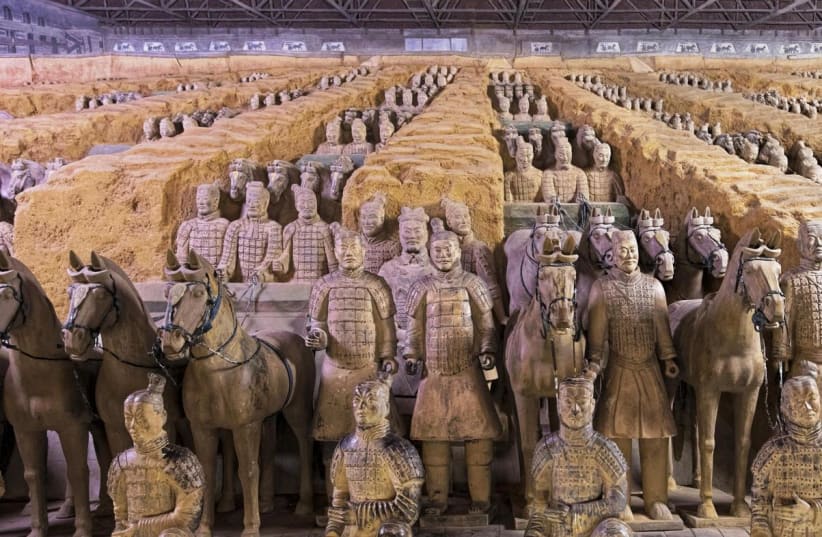Death traps and mercury poisoning are just some of the concerns facing archaeologists contemplating excavating Qin Shi Huang's tomb, China's first emperor.
In 1974, farmers stumbled upon one of the most meaningful archaeological finds in Shaanxi Province, China. While tilling the land, they unearthed a clay figure, only scratching the surface of what lay beneath.
Qin Shi Huang's Tomb
Subsequent excavations unveiled an array of pits housing thousands of life-sized terracotta army statues depicting soldiers and warhorses. This Terracotta Army seemingly served as protectors of the mausoleum of Qin Shi Huang, the first emperor of China, who reigned from 210 to 221 BCE. The mausoleum sits approximately 1,500 meters away.
Despite extensive exploration of the surrounding necropolis, the emperor's tomb remains unexplored, shrouded in intrigue for over two millennia. The foremost reason for this reluctance lies in the fear that excavations could harm the tomb, potentially causing the loss of invaluable historical insights. Presently, the only way to access the tomb involves invasive archaeological methods, fraught with the risk of irreparable damage. An illustrative example is the 1970s excavations of the city of Troy, led by Heinrich Schliemann, which, in his haste and inexperience, obliterated nearly all traces of the town he aimed to uncover. Archaeologists are determined to avoid repeating such hasty mistakes.
How could the tomb be excavated?
In pursuit of less invasive techniques, scientists have proposed methods like utilizing muons—subatomic particles created when cosmic rays collide with Earth's atmosphere. Muons function as an advanced X-ray, capable of peering into structures without physical intrusion. Regrettably, most of these proposals have yet to gain traction.
However, aside from potential damage, opening the tomb presents even graver and more immediate dangers. In an essay by ancient Chinese historian Sima Qian, written approximately a century after the emperor's demise, it is disclosed that the tomb was rigged with traps intended to thwart any intruders. Precious artifacts and an extraordinary treasure were deposited within the tomb.
Artisans were commissioned to craft bows and arrows designed to repel any trespassers," he elucidated. Even if these 2,000-year-old archaic weapons were to fail, the historian asserted that a deluge of toxic liquid mercury awaited those who dared to desecrate the tomb. While this might sound like a fictitious threat, scientific studies examining mercury levels around the grave have uncovered concentrations significantly higher than one would expect in ordinary soil.
A 2020 paper posits, "Highly volatile mercury may have seeped through cracks that developed over time in the tomb’s structure, corroborating the accounts found in ancient chronicles that claim the tomb was never opened or looted." The tomb of Qin Shi Huang remains sealed and inaccessible, though far from forgotten.
Researchers hope that scientific advancements may finally unveil the tomb's long-guarded secrets.As for the emperor himself, a considerable portion of his life was dedicated to pursuing a legendary elixir of immortality—a quest many believed in fervently. He embarked on extensive journeys searching for this mythical potion, even dispatching a unique expedition to locate a legendary island rumored to hold vast quantities of this miraculous elixir. Seeing himself as a deity and coveting eternal life, he resorted to consuming a concoction of mercury, hoping it would confer immortality. Ironically, this potion proved to be his undoing, resulting in his demise at 50 after a 37-year reign.
